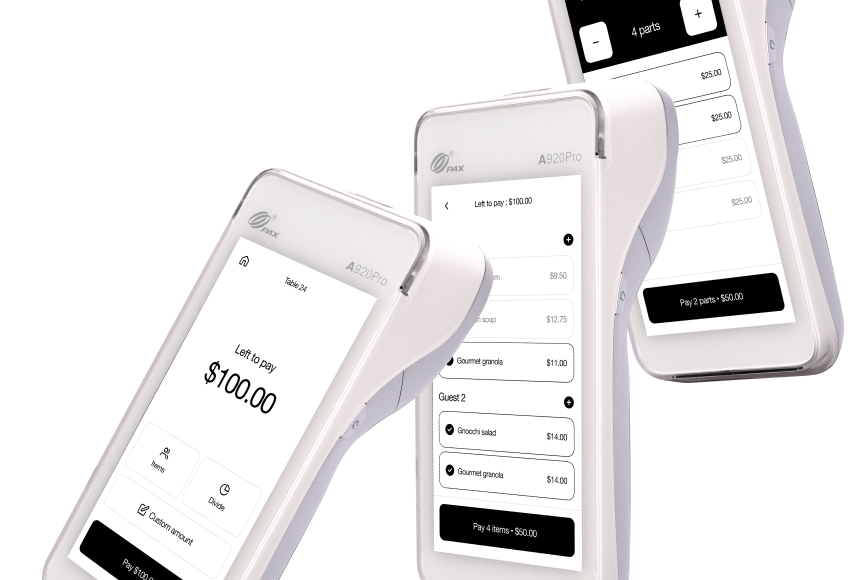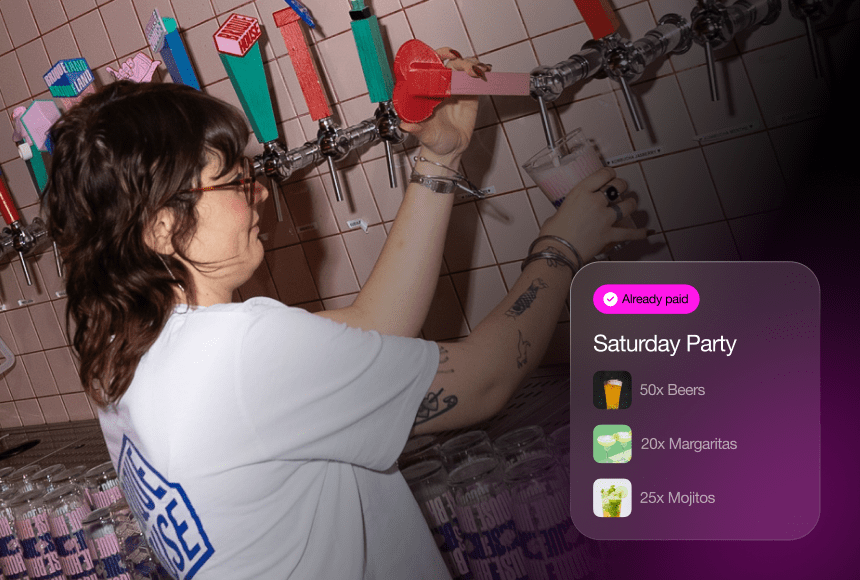
How Smart Payment Terminals Are Changing the Restaurant Game
From Card Readers to Smart Solutions: Why It Matters
For years, restaurant owners have relied on basic card readers to process payments at the end of a meal. You know the drill: a server brings a handheld card machine, the customer inserts or swipes a card, and receipts print out on that same device. It’s been functional but not particularly innovative. Today, we’re witnessing a new wave of smart payment terminals—compact, app-driven devices that promise more efficiency, better data, and even a friendlier customer experience.
But is this high-tech hardware truly a game changer, or just a fancy gadget? For many restaurateurs, these advanced terminals can address longstanding pain points like slow table turnover, inaccurate bills, and staff overload during peak hours. Let’s explore what makes a smart payment terminal different, how it integrates into the flow of modern dining, and whether it could give your restaurant the edge it needs.
What Exactly Is a Smart Payment Terminal?
Gone are the days when a “payment terminal” was just a clunky device that took cards and printed out receipts. A smart payment terminal is like a miniature computer designed specifically for checkouts. It might include:
- Touchscreen Interface: Instead of numeric keypads, you’ll often see menus, promotional images, or even tipping options displayed on a colorful screen.
- Wireless Connectivity: Many new terminals link via Wi-Fi or cellular networks, so staff aren’t tethered to a single spot in the dining room.
- App Ecosystem: Some devices allow you to install or access different apps—managing loyalty programs, offering e-receipts, or integrating with your existing point-of-sale (POS) system.
- Mobile Payment Support: Quick scanning for Apple Pay, Google Pay, or scanning a QR code. This is especially relevant if you want to meet guests’ rising expectations for contactless transactions.
Rather than just capturing card details, a smart terminal can help you gather diner insights, adjust orders on the fly, and even prompt for higher tips in a friendly manner. You’re adding an interactive element to the typically mundane act of paying a bill.
Why Restaurant Owners Are Eyeing Smart Payment Tech
If you’re a restaurant owner, you’ve likely experienced the typical rush-hour chaos: servers hustling to bring checks, handle credit cards, and keep up with new tables. With so much going on, a friction-free checkout is not just a nice perk—it’s practically a necessity. Here’s how a smart payment terminal can make your life easier:
- Speedier Checkouts: Diners can finalize payments faster, often with a simple tap or scan. That means shorter lines, quicker table turnover, and less stress at closing time.
- Reduced Manual Errors: Since everything is digital, you minimize the risk of servers typing in the wrong amount or forgetting to add a menu item. Some systems even let guests review their itemized bill themselves.
- Integrated Tipping: On-screen prompts encourage diners to add a tip—sometimes resulting in more generous gratuities than the old-fashioned line item on a paper receipt.
- Data Collection: A robust terminal might feed purchase data into your POS or analytics tool automatically. Over time, you gain insights into high-selling dishes, average check sizes, and customer loyalty patterns.
According to the National Restaurant Association (Restaurant Industry Facts), digital solutions that streamline transactions continue to be a top investment priority for many restaurant owners. Speed and convenience have never been more vital for staying competitive.
Seeing It in Action: The Tableside Payment Evolution
Tableside payment isn’t new in concept—servers have carried portable card machines for years. But these new smart terminals go a step further. They’re smaller, more intuitive, and can do a lot more than print a receipt. Some solutions, like sunday’s approach, allow guests to pay using a QR code right on their own phone. This does several things:
- Keeps Staff on the Floor: Instead of running to the POS station, servers stay tableside for real human interactions.
- Encourages Self-Checkout: Diners scan a code, tip, and pay instantly. Perfect for faster table turnover and minimal staff overhead.
- Invites Real-Time Feedback: Some systems even prompt diners for a quick review or rating, capturing feedback on the spot rather than days later.
The effect on your workforce can be significant. Fewer manual tasks let your team focus on hospitality—like suggesting dessert or personalizing the experience—rather than scurrying back and forth for the check.
Gadget or Real Revolution?
So, is all this just a fancy gadget or truly transformative? Let’s compare the two extremes:
- The “Gadget” Argument: Critics say these terminals are simply updated versions of card machines with touchscreens. They worry about potential breakdowns or software hiccups, and question whether they genuinely change the service dynamic.
- The “Revolution” Argument: Proponents point to how these devices can tie into loyalty apps, automate receipts, boost tip percentages through suggested tipping screens, and sync seamlessly with the restaurant’s data systems. They see an entirely new way of engaging guests, not just a flashy piece of hardware.
The truth likely sits somewhere in the middle. A smart payment terminal alone won’t rescue a poorly managed or understaffed restaurant. But combined with thoughtful training, a well-organized floor plan, and a willingness to evolve, it can become a catalyst for better service.
Key Factors to Consider Before You Buy
If you’re leaning toward investing in a smart payment terminal, it’s important to analyze your options. Not all solutions are built alike, and jumping on the wrong product could cause more headaches than it cures. Evaluate:
- Compatibility with Your POS: Ideally, you want a solution that speaks directly to your existing system. An open API or official partnership is a good sign.
- Workflow and UI: Will your servers find the interface intuitive? Are there user-friendly screens for splitting checks or adding last-minute items?
- Hardware Durability: Restaurants can be chaotic. Devices need to withstand spills, drops, and heavy usage. Check if the manufacturer’s warranty covers wear and tear in a busy environment.
- Support and Training: Does the vendor offer quick-response support if something malfunctions mid-service? Training videos or on-site demos can ensure your staff hits the ground running.
- Cost Structure: Is there a monthly fee, a transaction percentage, or both? Make sure you understand how those fees stack up against the potential savings or revenue boost from speedier checkouts.
An Upserve (How to Select the Right Restaurant POS System) article notes that the hidden costs—like integration fees or staff training time—can catch you off guard if you’re not prepared. Taking time to weigh these factors can save money and reduce downtime later.
The ROI of Speed and Convenience
Some restaurant owners wonder if these devices actually pay for themselves. After all, you’re investing in hardware, possibly paying a monthly service fee, and training staff to use it. Where’s the return? Here are a few examples of real gains you might see:
- Faster Table Turn: If you trim five minutes off each transaction, and you handle multiple seatings in a night, that can add one or two extra seatings per shift—especially in peak times.
- More Tipping: Digital tip suggestions displayed right in front of diners often nudge them toward 20% or 25% more reliably than a blank line on a paper receipt.
- Reduced Errors: Automatic itemization and digital receipts lower the risk of incorrect charges or lost receipts. Less friction means fewer complaints and faster resolution when mishaps do occur.
- Better Guest Data: A robust system might capture contact info or feedback at the end of a meal. Over time, that data can fuel loyalty campaigns or gather insights on spending habits.
Even small improvements in each area can combine into significant revenue boosts, not to mention higher customer satisfaction and repeat visits.
Real-World Story: A Neighborhood Bistro’s Transformation
Imagine a modest bistro in a bustling downtown area. Let’s call it Bella’s Kitchen. They open for lunch and dinner, seat about 40 guests, and frequently face a midday rush of office workers short on time.
One day, Bella invests in a set of smart payment terminals that integrate with her existing POS. Servers each carry a device the size of a smartphone. Now:
- When a table finishes, the server can bring the device over. The diner sees their itemized bill on the touchscreen, reviews it, taps a tip percentage, and pays via card or mobile wallet.
- Receipts go straight to the guest’s email. No paper needed. Bella no longer has to maintain large rolls of receipt paper or deal with half-printed receipts jamming the machine.
- Because the entire process is so quick, Bella’s staff can turn tables faster. At lunch, they squeeze in an extra seating or two, and by dinner, servers feel more relaxed without the usual last-minute scramble for checks.
Within a month, Bella notices a slight rise in average tips, improved staff morale, and fewer lines at the door during peak hours. She also sees better end-of-day reporting accuracy, since each sale automatically logs into the POS with minimal manual entry.
Overcoming Potential Obstacles
No tech solution is perfect, and you might encounter hurdles:
- Guest Resistance: Some older patrons could be wary of newfangled devices. That’s why a short demonstration or optional fallback to standard payment is wise. Usually, once they see how easy it is, they’ll appreciate the convenience.
- Connectivity Issues: Relying on Wi-Fi or cellular data can pose challenges if your signal is spotty. Investing in a stable network or a backup can keep those transactions flowing.
- Staff Learning Curve: Make sure you budget time for training. If your servers fully understand the device, they can troubleshoot minor snags and keep confidence high.
The bottom line is, a small level of friction is common with any new system. The key is to handle it head-on and reassure your staff and diners that the improvements will be well worth it.
Is a Smart Payment Terminal Right for You?
While not every restaurant absolutely needs cutting-edge technology, ignoring these advances can put you at a competitive disadvantage—especially if your local competitors are adopting modern payment experiences. If you struggle with slow table turns, frequent checkout errors, or you want an easy path to integrate loyalty programs, then a smart payment terminal could solve many pains.
Consider how it aligns with your brand. If your focus is all about a cozy, offline charm, maybe you keep the technology behind the scenes. But if you want to showcase a fresh, forward-looking vibe, letting diners see a sleek device or scan a code can reinforce that modern message.
Ultimately, a smart payment terminal can be more than a fancy device. It can streamline your staff’s workflow, increase tipping, expedite table turnover, and enhance the guest experience. That’s the hallmark of a true revolution, not just a gadget.
So ask yourself: in a busy restaurant environment, is speed, accuracy, and convenience at the final step of service worth the investment? For many owners, the answer is a resounding “yes.” Whether you choose a handheld terminal or a contactless QR-based approach from a provider like sunday, your customers (and staff) might find they never want to go back to old-school payment systems again.
Find out more today
Drop us your details below and we’ll reach out within the next 24h
The payment terminal to make your operation simpler.
Connected to your POS, we offer the only payment terminal specifically designed for restaurants.


